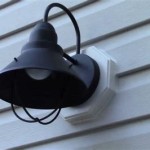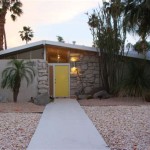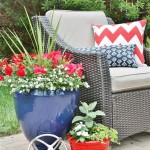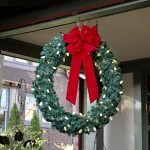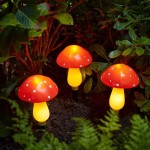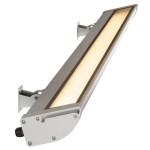Do You Need Special Bulbs For Outdoor Lights?
Outdoor lighting plays a crucial role in enhancing security, aesthetics, and functionality around homes and businesses. Selecting the right bulb for these fixtures involves more than just choosing a wattage or style. Environmental factors and specific lighting needs necessitate careful consideration of bulb characteristics to ensure optimal performance and longevity.
Several key factors differentiate bulbs suitable for outdoor use from those typically used indoors. One primary concern is weather resistance. Outdoor bulbs must withstand various weather conditions, including rain, snow, extreme temperatures, and humidity. Bulbs not designed for such exposure can malfunction, experience shortened lifespans, or even pose safety hazards.
Temperature variations present a significant challenge for outdoor bulbs. Extreme heat and cold can affect the performance and lifespan of standard bulbs. Bulbs designated for outdoor use are designed with materials and construction that can tolerate these fluctuations, ensuring reliable operation regardless of the season.
Durability is another critical factor. Outdoor bulbs are more susceptible to physical impacts than their indoor counterparts. Whether from accidental bumps, falling debris, or even vandalism, outdoor bulbs require a more robust construction to resist damage and maintain functionality.
The specific application of the outdoor lighting also influences bulb selection. Security lights, for example, often require brighter, more intense illumination than landscape or pathway lighting. Different bulb types offer varying levels of brightness and color temperature, allowing users to tailor the lighting to the intended purpose.
Different types of outdoor light fixtures require specific bulb shapes and bases. From floodlights to post lamps to string lights, understanding the fixture's requirements is crucial for choosing a compatible bulb. Attempting to use an incorrect bulb type can lead to improper function or even damage to the fixture.
Energy efficiency is an increasingly important consideration for outdoor lighting. While traditional incandescent bulbs are still available, more energy-efficient options like LEDs and CFLs offer significant long-term cost savings and reduced environmental impact. These bulbs consume less energy to produce the same amount of light, resulting in lower electricity bills.
Light-emitting diodes (LEDs) have become a popular choice for outdoor lighting due to their exceptional energy efficiency, long lifespan, and durability. LEDs are also highly resistant to temperature fluctuations, making them ideal for various climates. Furthermore, LEDs are available in a wide range of color temperatures, allowing users to customize the lighting ambiance.
Compact fluorescent lamps (CFLs) are another energy-efficient option for outdoor lighting. While not as long-lasting as LEDs, CFLs still offer significant energy savings compared to incandescent bulbs. However, CFLs can be sensitive to extreme temperatures, making them less suitable for harsh climates.
Halogen bulbs are a type of incandescent bulb that produces a bright, white light. They are often used in security lights and floodlights where high intensity is required. However, halogen bulbs are less energy-efficient than LEDs and CFLs and have a shorter lifespan.
Incandescent bulbs, while still available, are generally not recommended for outdoor use due to their low energy efficiency and short lifespan. They are also more susceptible to damage from weather and temperature fluctuations.
When selecting outdoor bulbs, consider the bulb's lumen output, which measures the total amount of light emitted. Higher lumens indicate a brighter light. Also, consider the color temperature, measured in Kelvin (K). Lower Kelvin values (2700-3000K) produce a warm, yellowish light, while higher values (5000-6500K) create a cooler, bluish-white light.
The bulb's lifespan, typically measured in hours, is another crucial factor. Longer lifespans reduce the frequency of bulb replacements, saving time and money. Checking the bulb's packaging or manufacturer's specifications provides this information.
Finally, consider any specific features the bulb may offer, such as dimming capabilities, motion sensing, or smart home integration. These features can enhance convenience, security, and energy efficiency.
Selecting the right bulb for outdoor lighting involves careful consideration of various factors, including weather resistance, durability, energy efficiency, and the specific lighting needs. By understanding these factors and the different bulb types available, users can make informed decisions that ensure optimal performance, longevity, and cost-effectiveness for their outdoor lighting systems.

Best Outdoor Lighting Bulbs Of 2024

How To Choose The Best Outdoor String Lights

Outdoor G40 String Lights Festive Patio And Garden Lighting Chronos

Indoor And Outdoor Light Bulbs Pacific Lamp Supply Company

7 Diffe Types Of Outdoor String Lights Parker Lighting

Can I Use This Bulb Outside 1000bulbs Blog

Are Led Bulbs Good For Outdoor Use Blog Lucas

How To Choose The Best Outdoor Lighting Color Temperature Solutions

12 Types Of Street Light Bulb For Any Outdoor Lighting Illumination Heisolar

Indoor Vs Outdoor Lighting Are They Interchangeable Kirby Electric
Related Posts
